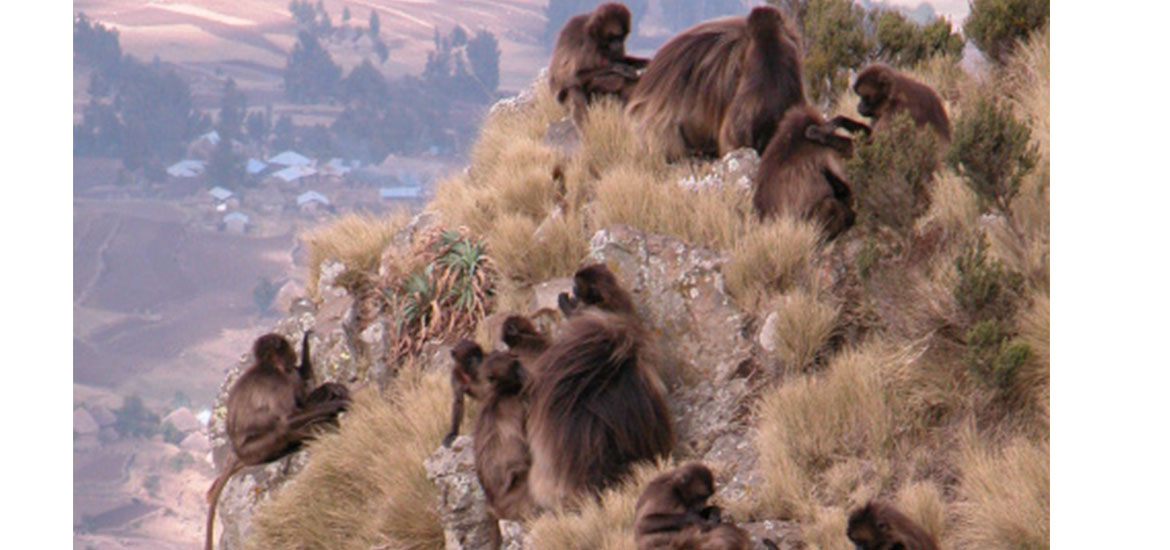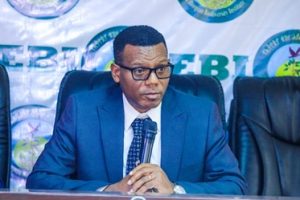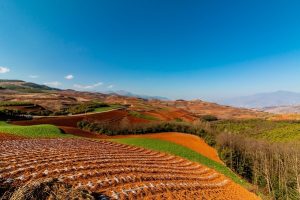
BY ADDISALEM MULAT
It has become obvious that environmental conservation plays a vital role in human growth and development beyond a shadow of doubt. Back in the day, on the grounds of lack of awareness on the subject of the issues of environment, the sought-after goal has not been achieved up to this point.
All that time ago, as most people did not have a wee drop of an idea about a diverse range of benefits they secure out of environmental conservation and planting tree seedlings in the left, right, and center of the country, they were not that interested to attach importance to the environment and reap the fruit of accomplishment in the shortest possible time.
Without knowing, most of them in dribs and drabs were merely taking part in the agricultural expansion, infrastructure development, firewood collection, cattle breeding, and things of that sort that make the lives of the general public harder and as difficult as it sounds.
Nowadays, following the initiative of Prime Minister Abiy Ahmed, Ethiopians residing in various parts of the country managed to plant billons of tree seedlings across the nation in a short space of time. They have been as well planting trees in every nook and cranny of the country every once in a while.
In the present climate, Ethiopians who are on familiar terms with the nitty-gritty of environmental conservation have been bending backward around the clock intending to turn vision to reality. As environmental conservation plays a major role in improving conservational enhancements and the lives of the general public, everyone has been putting the accent on planting tree seedlings.
In the current environment, most people would like to partake in planting tree seedlings to increase the forest coverage despite they do know known how to materialize their dreams.
In the previous interview Professor Masresha Fetene, an Emeritus Professor of Plant Ecophysiology at Addis Ababa University said in connection with improving the forest cover of the country said, “The first step to bringing about sustainable forest development is to have a complete and integrated land use policy and land use plan for the entire nation.
This, in my opinion, is the basis for any action for reforestation and afforestation programs, also to reduce forest loss while minimizing unsustainable land use and land cover changes.”
“Second is increasing research on indigenous tree species requirements, forest ecosystem functions, and good seed collection and selection. What to plant where and how to ensure survival during the first crucial years of a tree seedling is best answered through research.
The good work started at the Ethiopian Environment and Forestry Research Institute should be expanded and multiplied in the different regions.”
To tell the truth, in this day and age, people in a wide spectrum of the regional state of the country have been playing a part in environmental conservation for the simple reason that they have realized the benefits.
The Guassa Community Conservation Area situated in the central highlands of the Amhara National Regional State which is inundated with an important component of the Afro-Alpine habitat of Ethiopia is winning the hearts and minds of all and sundry in a short time.
According to the Equator Initiative case studies, Guassa is home to many of the species commonly associated with Afro-Alpine ecosystems that include 22 mammal species, 27 percent of which are endemic to Ethiopia.
The Guassa area is known for its species endemism, threatened and rare species such as the Ethiopian wolf, gelada baboon, and Ankober Serin Seedeater. The region is also an important water catchment area for the Nile and other important rivers draining into the lowlands of Ethiopia.
The area is acknowledged for its collection of Guassa grass and firewood and grazing of livestock. In addition to making ropes, household equipment, baskets, painting brushes, mattresses, and so forth, Festuca grass is significant in fashioning mats intended to be used in houses as its teeny-weeny thorns clasp bedbugs and thwart them from spreading diseases.
Recently, The Ethiopian Herald had a short stay with Dr. Bezawork Afework, Assistant Professor of Avian Ecology and Behavior and Chairperson, Department of Zoological Sciences at Addis Ababa University concerning the Diversity, distribution, and habitat association of birds in the Guassa-Menz Community.
According to her, among the significant typical groupings of such birds that give the green light to their easy recognition take account of the presence of feathers that are exceptional to them, the growth of forelimbs as wings used typically for flight, feathered tail for balancing as wings used mostly for flight and other related aspects.
She said, “Apart from their beauty, interesting behavior, and cognitive capacity, birds are part of the global ecosystem. Their presence or absence can have a detrimental effect on the environment.
They are good indicators of habitat quality and environmental degradation that serve as indicators to monitor environmental changes like the level of contamination and environmental impacts.”
“The distribution of avian species in Guassa-Menze Community Conservation showed variation amid habitats. The highest numbers of bird families were observed in moorland and grassland habitats while the least number of families was in the forest habitats.”
As to Dr. Bezawork, a total of 86 species of birds were identified. The identified bird species were grouped into 14 orders and belong to 35 families. Family Accipitridae (13.09 percent) had the highest number of species followed by Fringillidae (9.52) and Motacillidae families (8.33 percent). The lowest number of family species accounts for 1.19%.
Ethiopia is inundated with the richest and implausible ornithological terminuses in the continent of Africa that consists of more than nine hundred twenty-six bird species.
The beyond belief birdlife abundance can be ascribed to assorted climatic zones, landscape as well as communities. Additionally, the plentiful sumptuous and green forests, woodlands, moist and arid savannah, lakes, rugged terrain, and wetlands are home to Ethiopian birds.
As the general public is heading in the right direction regarding planting tree seedlings across the country with the intention of increasing the forest coverage of the country, the intended target is being achieved in most parts of the country. Furthermore, the regional states of the country have been attaching due importance to environmental conservation every once in a while.
In the previous interview with The Ethiopian Herald, Sebsebe Demissew, Professor of Plant Systematics & Biodiversity, Department of Plant Biology & Biodiversity Management, College of Natural Sciences, Addis Ababa University regarding increasing forest cover of the country said.
“As the country has varied topography, and climate, it will be important to plant mainly indigenous trees or shrubs or even introduce fruit trees that are adapted to grow and survive in those areas.
This will enable us to apportion the areas to be used for agriculture, forestry, etc. Once areas to be used for forestry are identified at various levels, it would be important to have more trees planted in such areas.”
The Ethiopian herald December 30/2020





